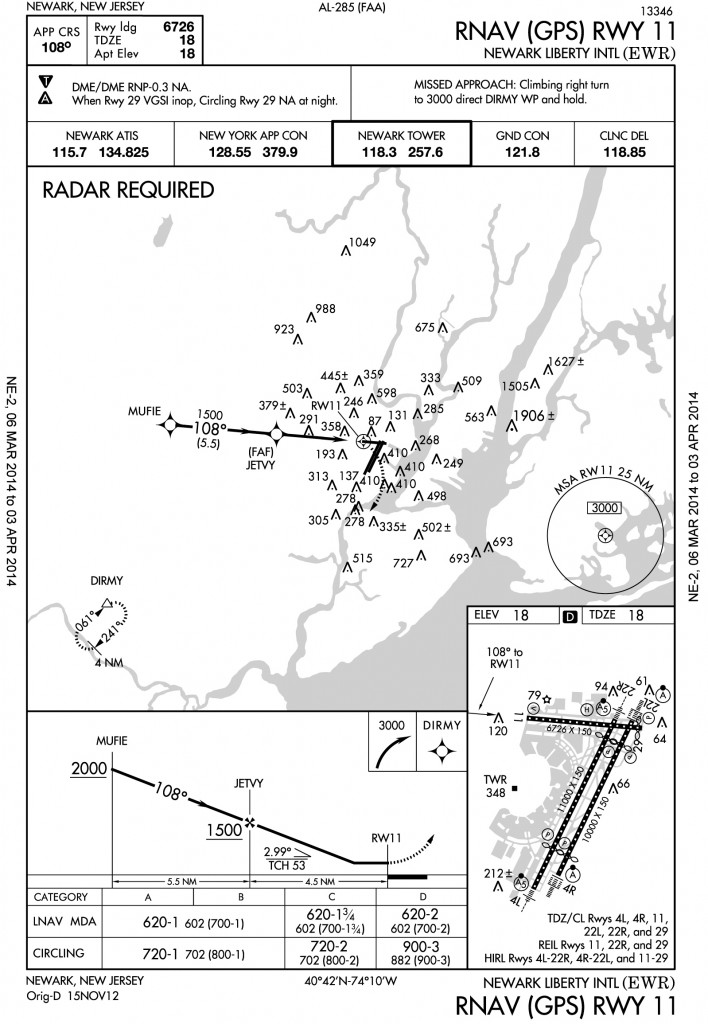
My article about a “new” third way to start an approach, by flying to the intermediate fix (IF), drew many comments, including one asking “wouldn’t it be best to establish yourself earlier on the approach earli
er than the IF.” Another flight instructor explained that, in the case of the GPS 31 approach into Palo Alto, the IAF locations are inconvenient (unless you’re flying in from Japan!) and are over mountainous terrain, which is why most pilots start this approach at the IF. Now, even the FAA doesn’t consider an IAF a necessity and many approaches are charted without any IAFs!
First, my thanks to longtime friend Hilton Goldstein, for pointing out a number of approaches that lack an IAF. Hilton is the brains behind WingX, an integrated aviation app for the iPhone and iPad that provides just about every function a pilot might need for planning and flying a flight. He reviews every new instrument procedure chart before it goes into WingX, which is how he spots interesting procedures.
But first let’s go to the source, the Air Traffic Control Handbook, Order 7110.65U. Last year, section 4-8-1 Approach Clearance, was updated and now says in part:
“Standard instrument approach procedures (SIAP) must begin at an initial approach fix (IAF) or an intermediate fix (IF) if there is not an IAF.” [emphasis added].
Newark Liberty International (KEWR) is a great example. By my count, they have a total of 14 approaches that lack an IAF; all begin at an IF. An example is the RNAV (GPS) RWY 11 approach, which starts at the IF, MUFIE. Note the chart is marked RADAR REQUIRED, as are all charts for procedures starting at an IF.
Looking for the RADAR note is one possible clue that an approach might lack an IAF and start at an IF. At KEWR, 14 approaches have that restriction and all start at an IF. Well technically, one of them doesn’t have an IF, but it was probably an oversight.
If you look at the VOR RWY 11 at KEWR, you’ll note it starts at PINEZ. The next fix, LOCKI, can be identified as the Final Approach Fix (FAF) since it shows a Maltese cross at LOCKI in the profile view. An intermediate segment begins at an IF and terminates at an FAF, in this case LOCKI. Thus PINEZ should be an IF, though it’s unmarked. So technically, the FAA cannot clear an aircraft to start this approach at PINEZ, since per JO 7110.65U, an approach must begin at “an intermediate fix (IF) if there is not an IAF.” My guess is “IF” will be added to PINEZ in a future chart revision.
Why don’t these approaches have an IAF? Probably because it simplifies things in what’s already some of the most congested airspace in the United States. Besides, per the FAA Instrument Procedures Handbook, “The purpose of the initial approach segment is to provide a method for aligning the aircraft with the intermediate or final approach segment.”
In most cases, an aircraft can start at an IAF from any direction. Depending upon the angle of arrival at an IAF, an aircraft may need a lot of space and time to get turned around and straightened out, hence the need for the initial segment.
But airliners flying into a major metropolitan airport like Newark are usually vectored in an orderly line more than 100 miles out from the start of an approach. Thus they’re well lined up and hairpin turns aren’t required as they start an approach. In that kind of structured environment, there’s no need for an initial segment to get lined up and hence no reason not to start at an IF. So what do you think? Will the IAF slowly fade away in the future, except in non-radar environments?
Vectors to Fixes Outside the FAF
Another change last year in section 4-8-1 of 7110.65U says that aircraft can now be vectored to start an approach at any fix, as long as it’s 3 NM or more outside of the FAF. Typically in the past, vectors have been to join the final approach course along a leg, not to a particular fix (except for the IAF and IF). Here’s the exact text:
“Where adequate radar coverage exists, radar facilities may vector aircraft to the final approach course, or clear an aircraft to any fix 3 NM or more prior to the FAF along the final approach course in accordance with Paragraph 5-9-1, Vectors to Final Approach Course, and Paragraph 5-9-2, Final Approach Course Interception.”
Looking at Paragraph 5-9-2, one finds that controllers must assign a heading that cannot exceed 30° from the final approach course. Thus we end up with the following maximum intercept angles for joining the final approach course at a fix:
- 30° when at fixes outside the FAF, except for:
- 90 ° for intercepts at the IF, and
- any angle for intercepts at an IAF.
I’d venture to say that the majority of approaches don’t have any other fixes outside the FAF, other than the IF and IAF, which were covered by prior rules. Yes, you’ll find lots of feeder fixes outside the IAF, but you can typically join these at any angle. So while this rule change may give pilots and controllers another option on some approaches, it’s not clear to me that it offers much new benefit. If you’re aware of an approach where having this option offers a significant operational advantage, please share it with readers in the comments.
One thing we know for sure that’s constant is change. And that the rate of change is accelerating. Which means pilots and controllers alike will need to spend even more time learning about future changes and how they affect they way we fly. Perhaps that’s why a pilot certificate is often called a license to learn.


